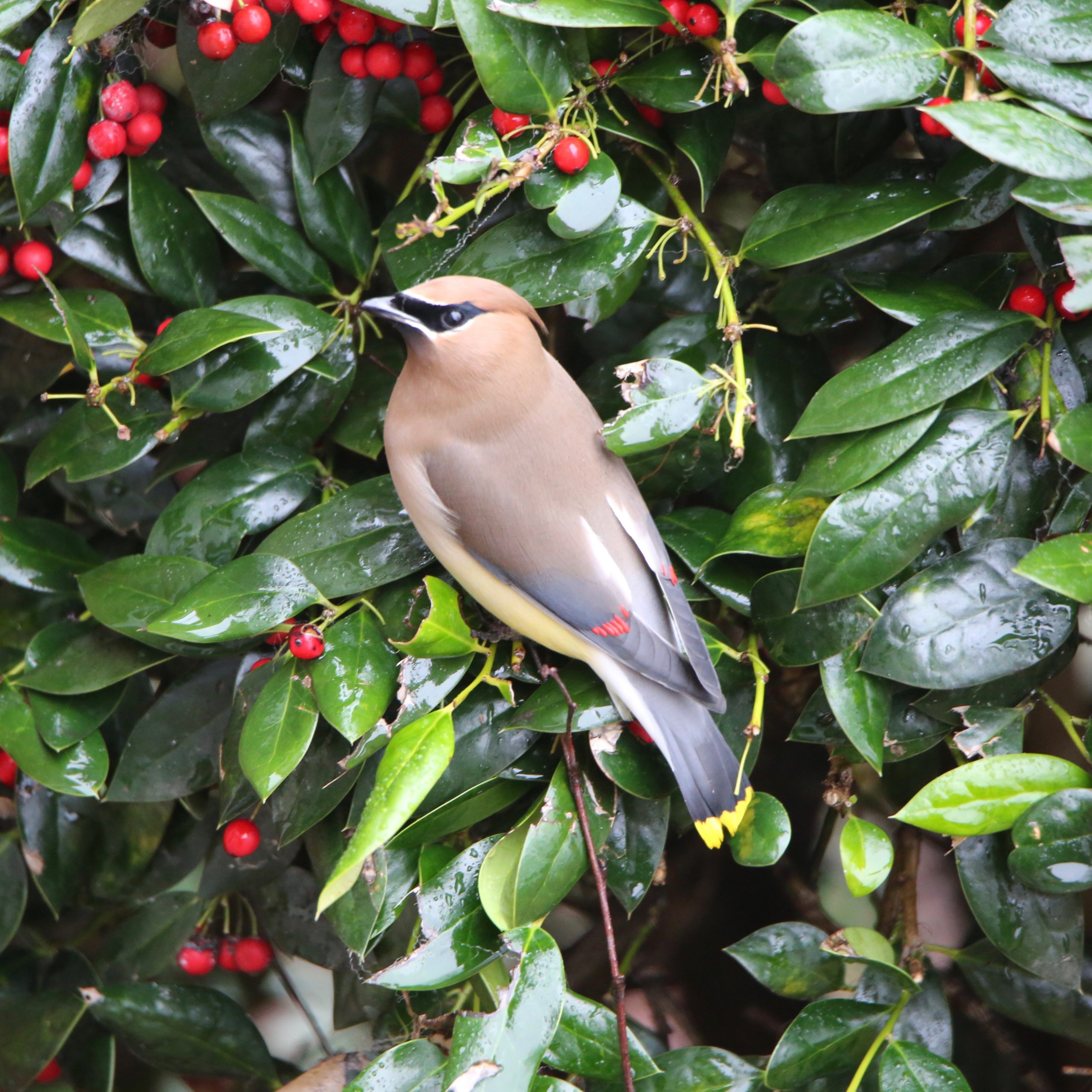
Cedar Waxwings are a type of songbird that belongs to the Waxwing family. They can be found in North, Central, and South America. Cedar Waxwings inhabits deciduous, coniferous, and mixed forests. They can be found in areas near streams, grasslands, and open fields. They also visit towns and suburban areas where people cultivate ornamental bushes that produce delicious berries, which can be a source of food for them. Major threats to the survival of Cedar Waxwings are collisions with windows and road accidents. Despite these factors, the population of Cedar Waxwings is large and stable in the wild.
10 Amazing Facts About Cedar Waxwings
1.Cedar Waxwings are named after the food they consume!
The principal half of this present bird’s name, “cedar”, comes from the essential food this bird consumes, the cedar berry. The second half of their name, “waxwing”, comes from the wax-like discharge that is present on the tips of their wings. Bird enthusiasts draw them by feeding them their favorite berry.
2.Cedar Waxwings are also known as Canada Robins!
This bird is local to North and Central America and has plush plumage. They have a peak on their head and a dark cover around their nose and eyes. Bohemian Waxwings share attributes with Cedar Waxwings, they are also local to North and Central America. Cedar Waxwings are otherwise called Canada Robins, cherry birds, or recellets.
3.Cedar Waxwings live with hundreds of diverse birds!
Cedar Waxwings are North American birds that live in enormous groups. They live with different birds of similar species when it isn’t their rearing season.
4.Cedar Waxwings have a comparatively short lifespan.
Overall, both males and females live for no more than 8 years in the wild. Males and females arrive at sexual development at one year old. The oldest Waxwing to live in the wild on record was 7 years old.
5.Cedar Waxwings offer flowers to their partners to initiate mating!
Once their mating season starts around springtime, the males perform a “jumping” dance to court females and assuming the females are intrigued, they “jump” back at them. Cedar Waxwings additionally pass objects like petals or bugs to and fro during romance ceremonies. Every now and then, a couple that is mating will rub their snouts together to show friendship.
6.Cedar Waxwings are one of the prettiest birds to exist!
Their radiant red wing feather tips, their yellow-orange shaded tail, and the quills around their eyes that seem like a dark veil make them look exceptionally charming. You might get them confused with Starlings due to their wing shape and the manner in which their herds act. If you spot this bird, you may recognize how magnificent and dainty in size they are.
7.Cedar Waxwings are super fast!
Cedar Waxwings are quick fliers and can fly at a speed of 25 mph. Their flight is extremely impressive and direct with the fast movement of their wings.
8.The main diet of a Cedar Waxwing is berries.
These birds mostly live on a diet of berries and fruits throughout the year. Their eating routine is comprised of berries such as cedar berries, holly berries, Eurasian honeysuckle berries, strawberries, and other organic products. Fruits and berries alone are not enough to meet the protein requirement of this species, yet this is the most significant food in their diet. Additionally, they eat insects during the breeding season and when trees are not bearing fruit.
9. It is illegal to keep a Cedar Waxwing as a pet.
Despite their calm personality and trusting nature, it is illegal to keep Cedar Waxwings as pets in the United States.
10.Cedar Waxwings and Bohemian Waxwings are very similar species!
Although they are similar species, they have very different appearances. To start, Bohemian Waxwings are grey overall with a peach blush around their mask. On the other hand, they are brown and grey with a black mask that has white outlines. A Bohemian Waxwing’s under-tail is a rust color, whereas, a white under-tail is characteristic of Cedar Waxwings.



